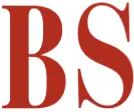Page 6 - Gdp Growth
Icra cuts its FY22 GDP estimate by 0.5%, sees economy expanding by 10.5%
The agency now expects the economy to grow 10-10.5 per cent in 2021-22, against the 10-11 per cent estimated earlier.
India to emerge as world's third largest economy in 2031: BofA Securities
Covid-19 to push back this feat by three years. BofA had earlier projected this in 2017 and had expected the Indian economy to achieve this status by 2028
Double digit GDP growth expected in FY22 as economy gathers pace: Report
As economic activities gather pace and investor sentiments revive, GDP growth is likely to enter a double-digit growth trajectory and may grow at more than 11 per cent in the next financial year
Indian economy to do better than -8% prediction: Finance ministry
The ministry said economic activity is gathering pace with mild stiffening of pandemic curve
Jan consumption, investment growth points to faster recovery for economy
The Indian economy seems to be moving on the path of faster recovery
Different strokes: New series leading to diverging trends in GDP, GVA
The revised method of GDP did not only change the base year, but also the way it is computed.
GDP data: Farm sector maintains strong growth; full year might see a blip
While several sectors returned to growth in Q3 , agriculture was all along different. GVA in last fiscal year at constant prices was 4.3 per cent.
GDP grows 0.4% in Q3: Pre-Covid times are here, says Finance Ministry
However, the economy grew by a much higher rate of 3.1 per cent in the fourth quarter of 2019-20
Q3 GDP: Accelerated vaccination is key to sustaining growth momentum
With services sector not yet fully functional, consumption spending - private and government - continues to trend lower. However, capital formation did turn around in the previous quarter
Govt says pre-pandemic times are here as Q3 GDP grows at 0.4%
'Significant recovery in manufacturing and construction augurs well for the support these sectors are expected to provide to growth in FY22,' says Ministry of Finance
GDP numbers: Positive surprise for third quarter but negative for FY21?
The GDP forecasts do indicate that we are on the right path and in the absence of any serious localized lockdowns can be expected to accelerate with time
Consumer sentiment in India's recovery
Growth that bounced back from -23.9 per cent in the first quarter to -7.5 per cent now seems poised to return to the positive zone in the third quarter
States' fiscal deficit to narrow to 4.3% of GDP in FY22: Ind-Ra
The agency's earlier forecast for FY21 was 4.5 per cent. The revision was made due to a sharper-than-expected contraction of 6.1 per cent in the nominal GDP
Increasing fiscal constraints
Govt must focus on mobilising more revenues
A steep fiscal correction
With modest revenue effort, the burden of cutting the deficit will fall on a big expenditure contraction
A pro-growth turn in government policy
The growth impact of PLI schemes could start showing up in FY22
RBI projects GDP growth rate at 10.5% over recovery in economic activities
RBI Governor Shaktikanta Das said vegetable prices are expected to remain soft in the near term as the central bank projected retail inflation rate to come down to 5.2 per cent in the current quarter
It's getting better over time: FM cuts Budget speech short this year
There has been less fudging with the revised estimates (RE) of 2020-21.
Hit hard by Covid-19 lockdown, economy on firm path of fragile recovery
Though the first case of Covid was detected at the end of January last year, the impact on the economy began to be felt towards the end of March, when the first nationwide lockdown was announced
Economy to witness 'V-shaped' rebound with 11% growth in FY22: Eco Survey
The rebound will follow an estimated 7.7 per cent contraction in the Gross Domestic Product (GDP) in the current financial year ending March 31
